第5章 CHAPTER II THE ANTHRAX(1)
I made the acquaintance of the Anthrax in 1855 at Carpentras, at the time when the life history of the oil beetles was causing me to search the tall slopes beloved of the Anthophora bees [mason bees]. Her curious pupae, so powerfully equipped to force an outlet for the perfect insect incapable of the least effort, those pupae armed with a multiple plowshare at the fore, a trident at the rear and rows of harpoons on the back wherewith to rip open the Osmia bee's cocoon and break through the hard crust of the hillside, betokened a field that was worth cultivating. The little that I said about her at the time brought me urgent entreaties: I was asked for a circumstantial chapter on the strange fly. The stern necessities of life postponed to an ever retreating future my beloved investigations, so miserably stifled.
Thirty years have passed; at last, a little leisure is at hand;and here, in the harmas of my village, with an ardor that has in no wise grown old, I have resumed my plans of yore, still alive like the coal smoldering under the ashes. The Anthrax has told me her secrets, which I in my turn am going to divulge. Would that Icould address all those who cheered me on this path, including first and foremost the revered Master of the Landes [Leon Dufour].
But the ranks have thinned, many have been promoted to another world and their disciple lagging behind them can but record, in memory of those who are no more, the story of the insect clad in deepest mourning.
In the course of July, let us give a few sideward knocks to the bracing pebbles and detach the nests of the Chalicodoma of the Walls [a mason bee] from their supports. Loosened by the shock, the dome comes off cleanly, all in one piece. Moreover--and this is a great advantage--the cells come into view wide open on the base of the exposed nest, for at this point they have no other wall than the surface of the pebble. In this way, without any scraping, which would be wearisome work for the operator and dangerous to the inhabitants of the dome, we have all the cells before our eyes, together with their contents, consisting of a silky, amber-yellow cocoon, as delicate and translucent as an onion peeling. Let us split the dainty wrapper with the scissors, chamber by chamber, nest by nest. If fortune be at all propitious, as it always is to the persevering, we shall end by finding that the cocoons harbor two larvae together, one more or less faded in appearance, the other fresh and plump. We shall also find some, no less plentiful, in which the withered larva is accompanied by a family of little grubs wriggling uneasily around it.
Examination at once reveals the tragedy that is happening under the cover of the cocoon. The flacid and faded larva is the mason bee's. A month ago, in June, having finished its mess of honey, it wove its silken sheath for a bedchamber wherein to take the long sleep which is the prelude to the metamorphosis. Bulging with fat, it is a rich and defenseless morsel for whoever is able to reach it. Then, in spite of apparently insurmountable obstacles, the mortar wall and the tent without an opening, the flesh-eating larvae appeared in the secret retreat and are now glutting themselves on the sleeper. Three different species take part in the carnage, often in the same nest, in adjoining cells.
The diversity of shapes informs us of the presence of more than one enemy; the final stage of the creatures will tell us the names and qualities of the three invaders.
Forestalling the secrets. of the future for the sake of greater clearness, I will anticipate the actual facts and come at once to the results produced. When it is by itself on the body of the mason bee's larva, the murderous grub belongs either to Anthrax trifasciata, MEIGEN, or to Leucospis gigas, FAB. But, if numerous little worms, often a score and more, swarm around the victim, then it is a Chalcidid's family which we have before us. Each of these ravagers shall have its biography. Let us begin with the Anthrax.
And first the grub, as it is after consuming its victim, when it remains the sole occupant of the mason bee's cocoon. It is a naked worm, smooth, legless and blind, of a creamy dead white, each segment a perfect ring, very much curved when at rest, but with the tendency to become almost straight when disturbed.
Through the diaphanous skin, the lens distinguishes patches of fat, which are the cause of its characteristic coloring. When younger, as a tiny grub a few millimeters long, it is streaked with two different kinds of stains, some white, opaque and of a creamy tint, others translucent and of the palest amber. The former come from adipose masses in course of formation; the second from the nourishing fluid or from the blood which laves those masses.
Including the head, I count thirteen segments. In the middle of the body these segments are well marked, being separated by a slight groove; but in the forepart they are difficult to count.
The head is small and is soft, like the rest of the body, with no sign of any mouth parts even under the close scrutiny of the lens.
It is a white globule, the size of a tiny pin's head and continued at the back by a pad a little larger, from which it is separated by a scarcely appreciable crease. The whole is a sort of nipple swelling slightly on the upper surface; and its double structure is so difficult to perceive that at first we take it for the animal's head alone, though it includes both the head and the prothorax, or first segment of the thorax.